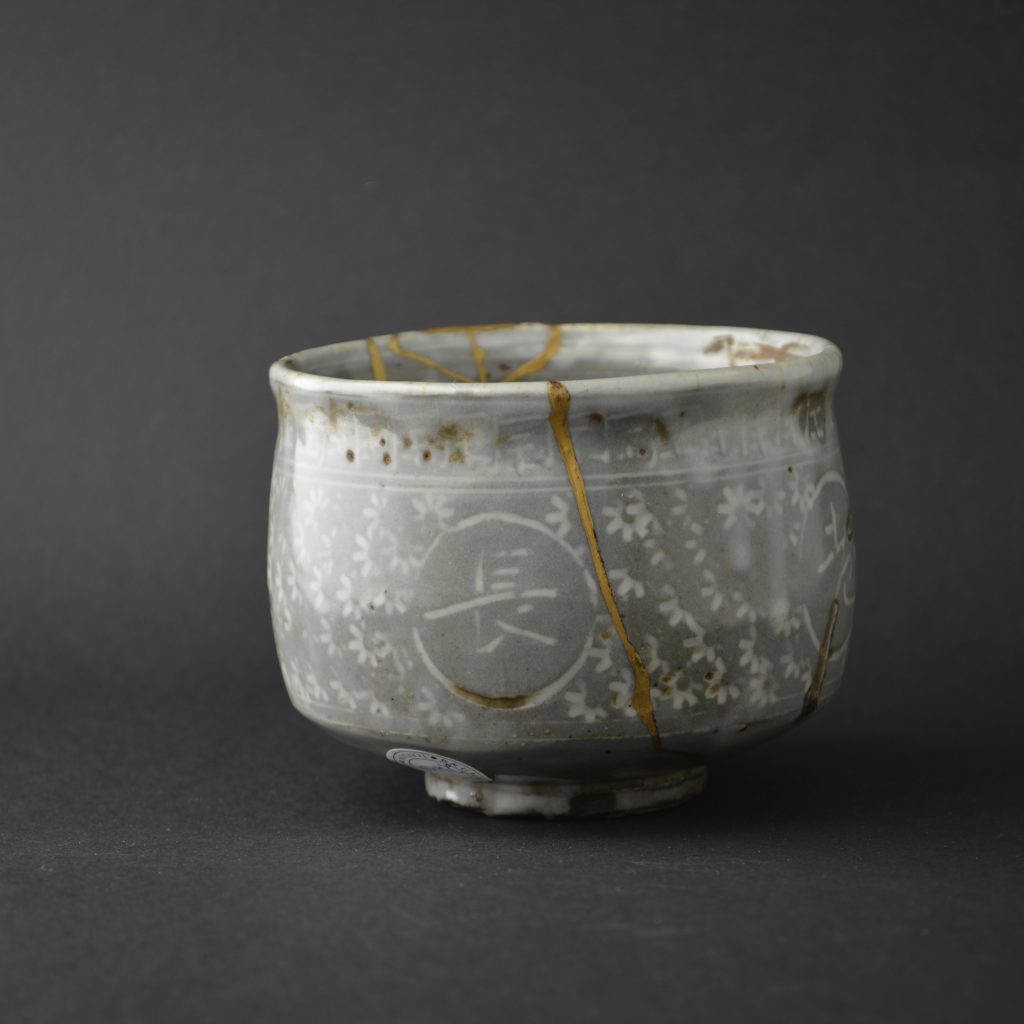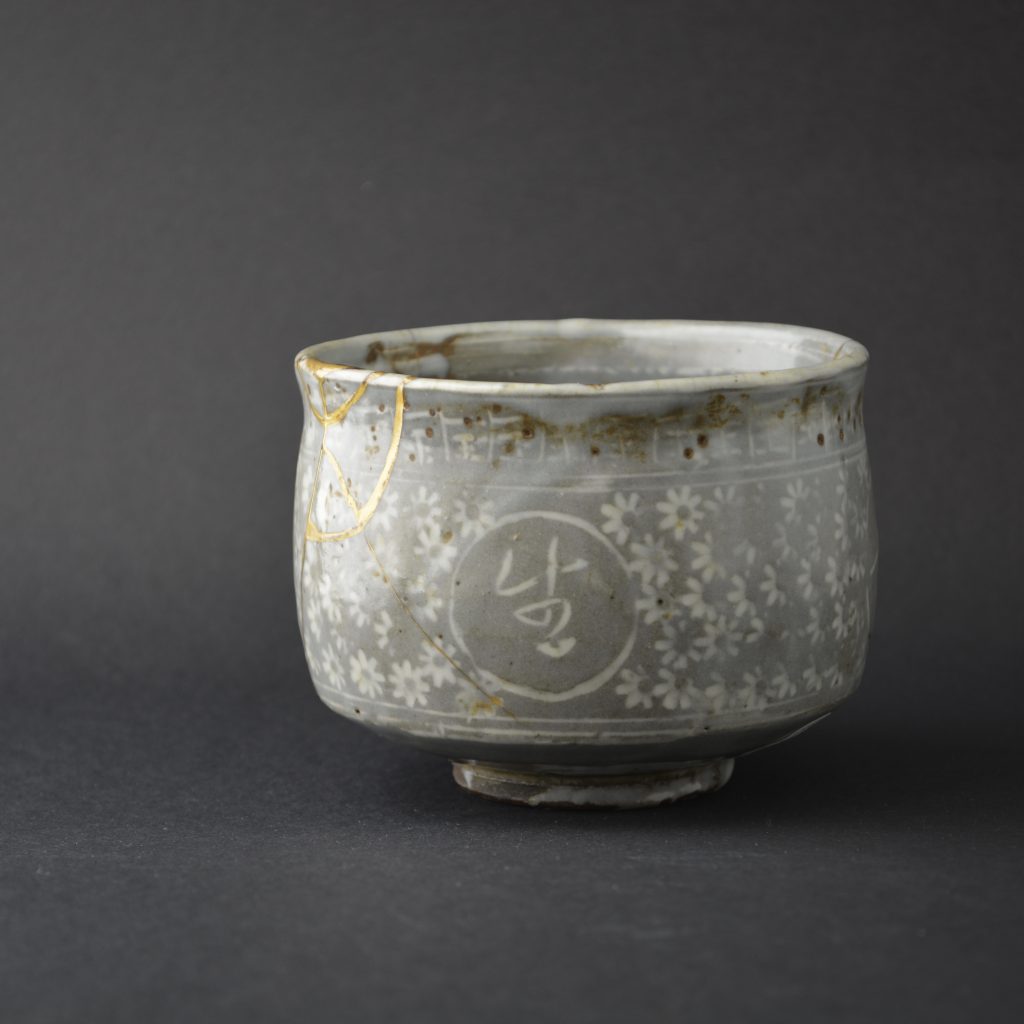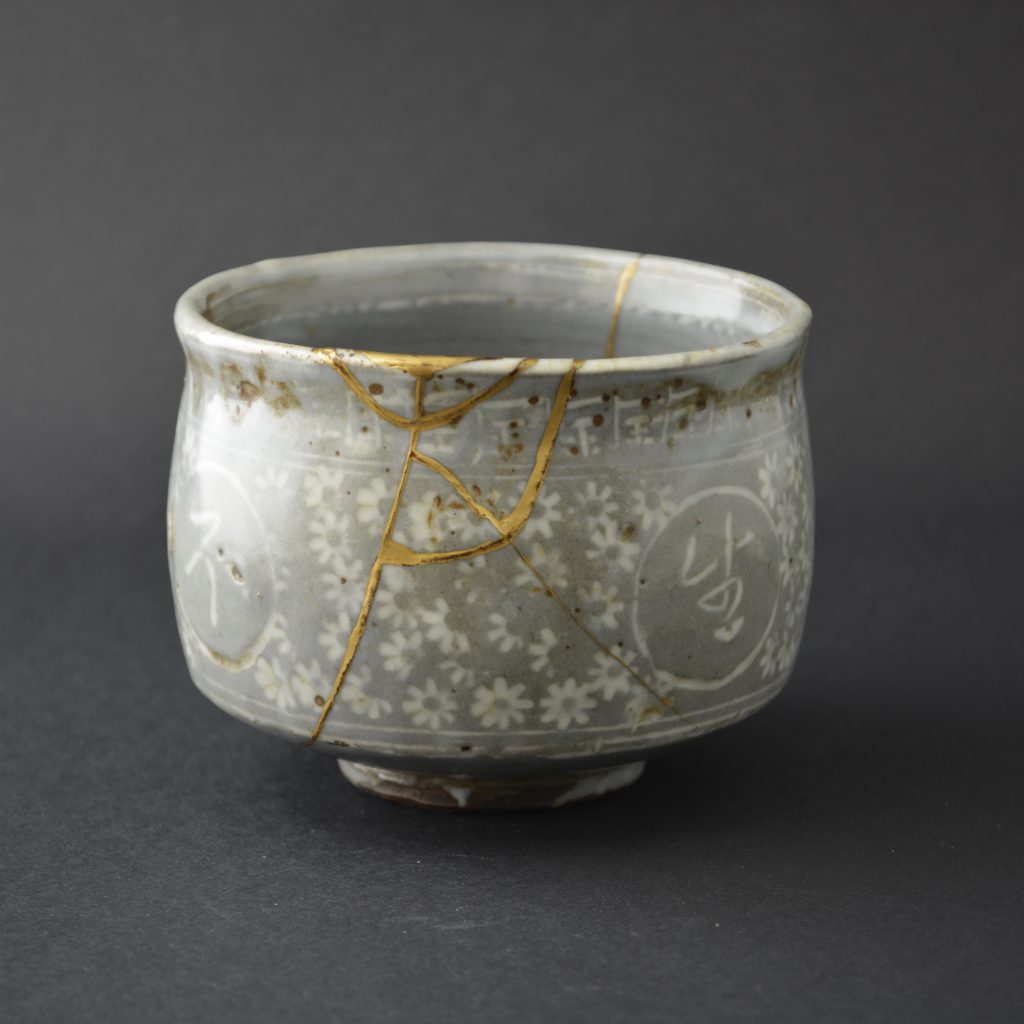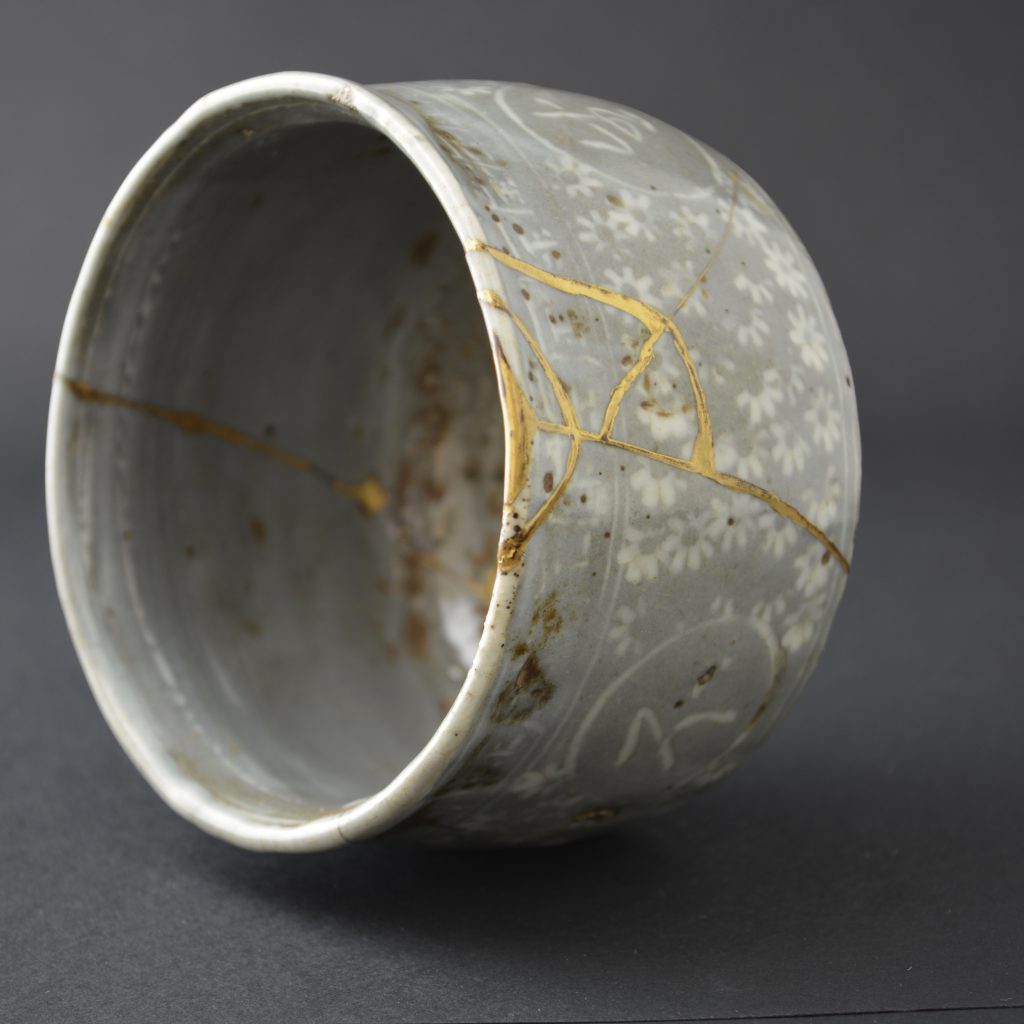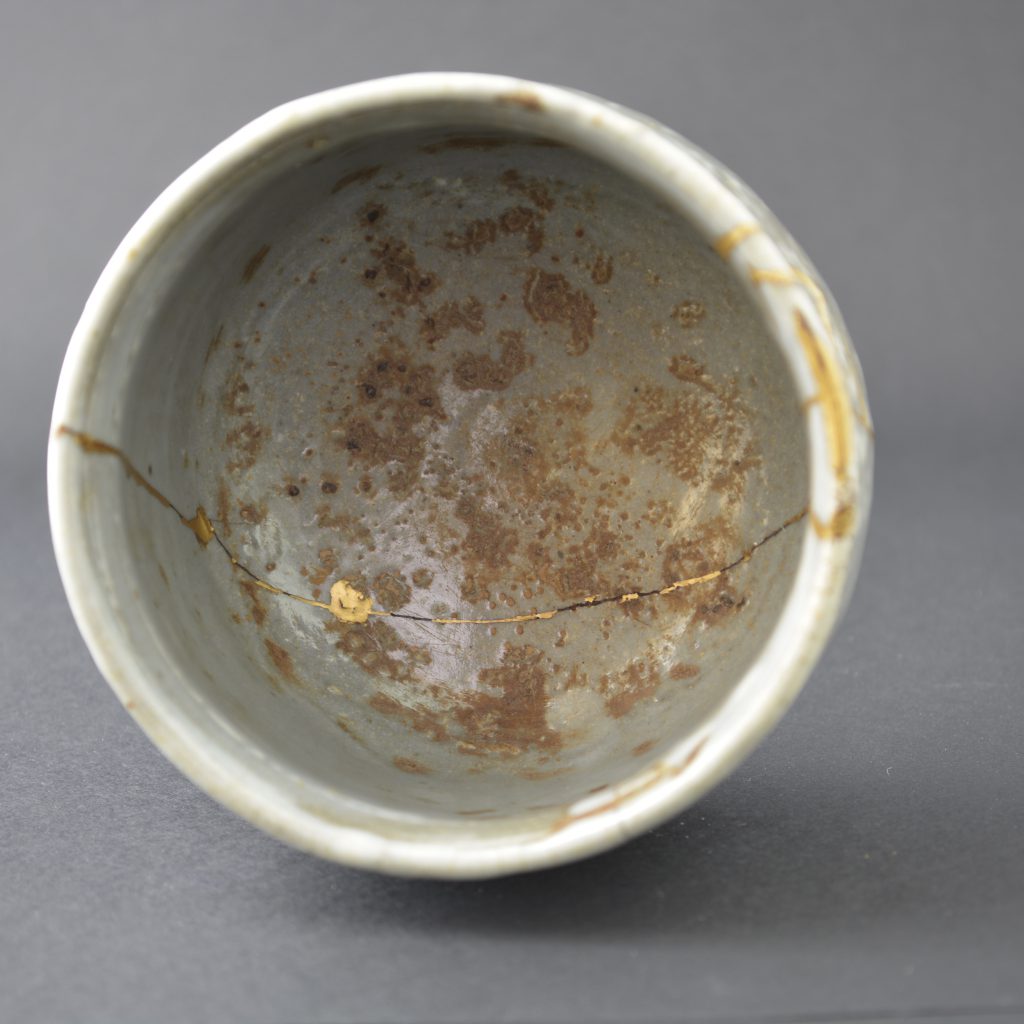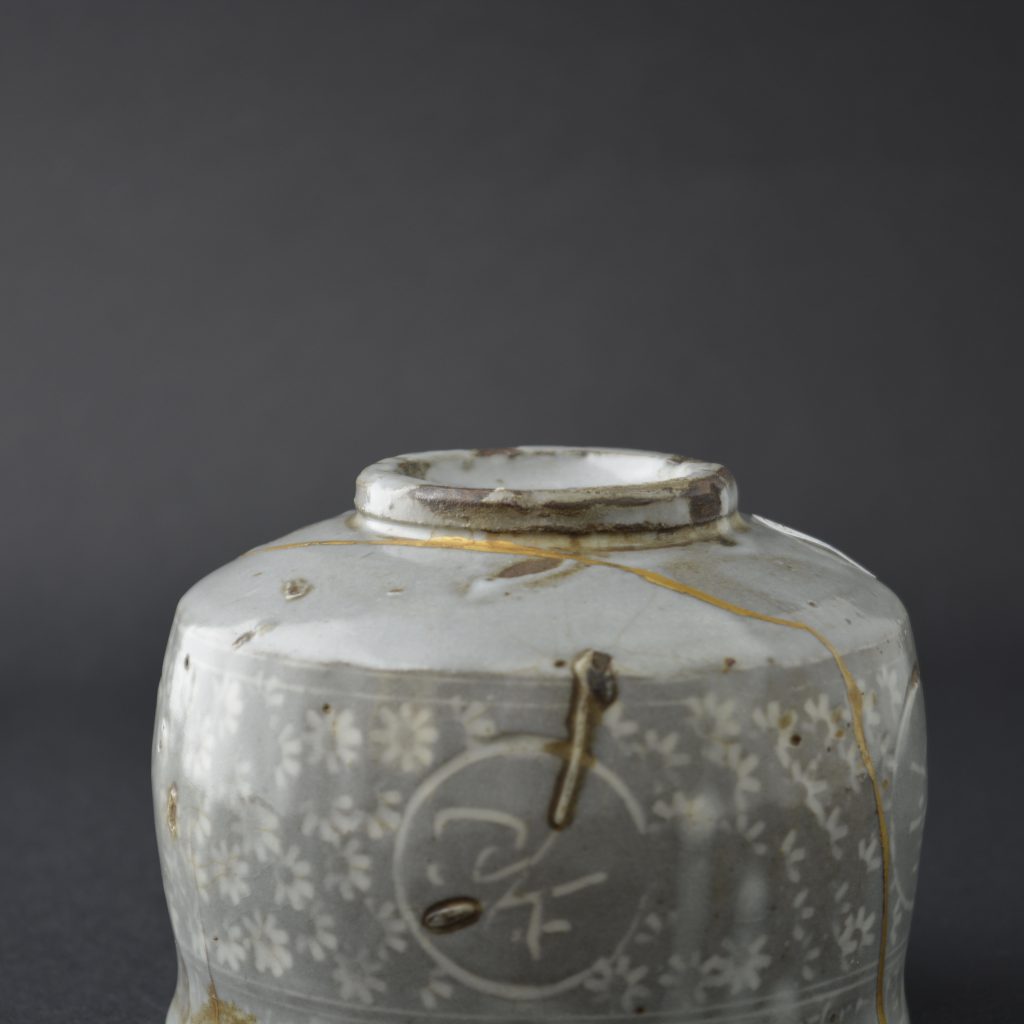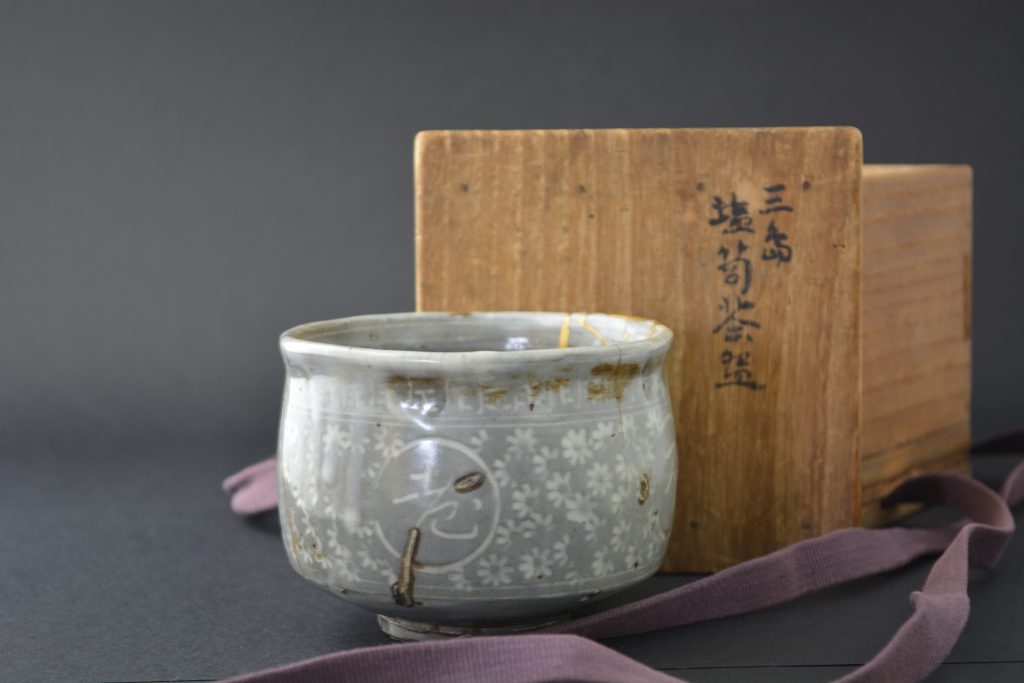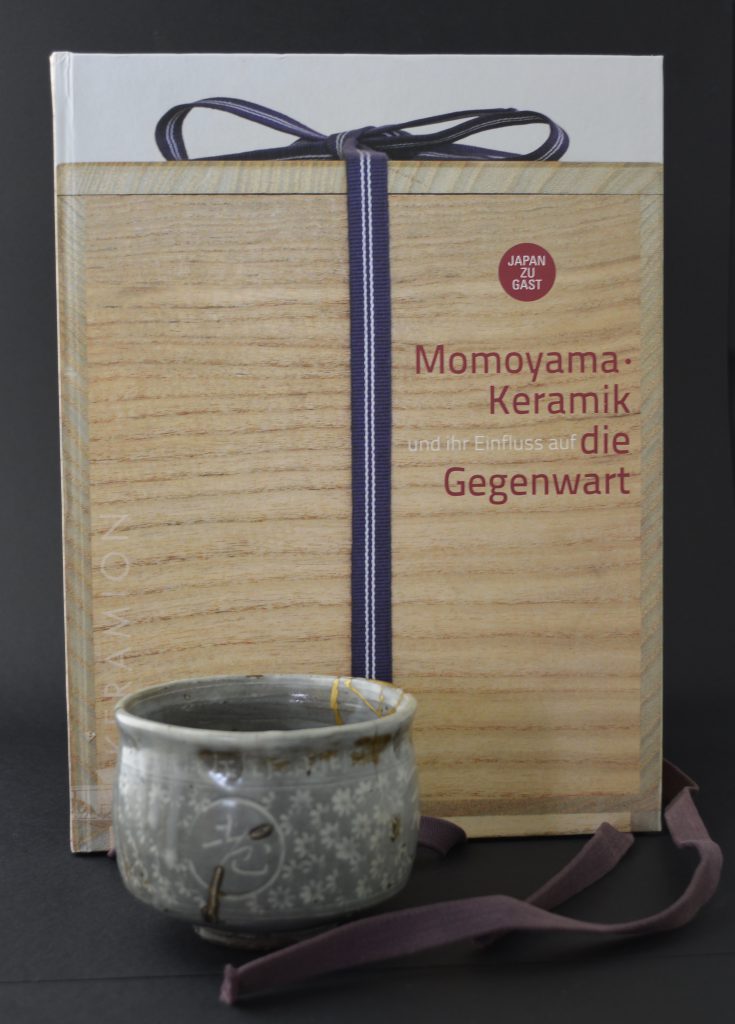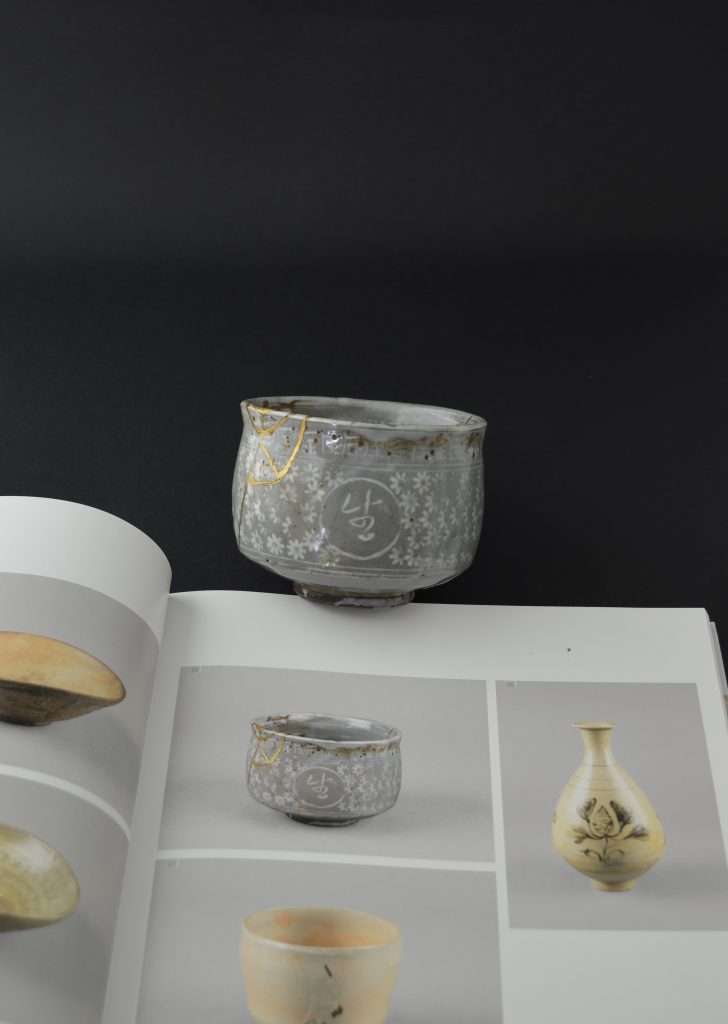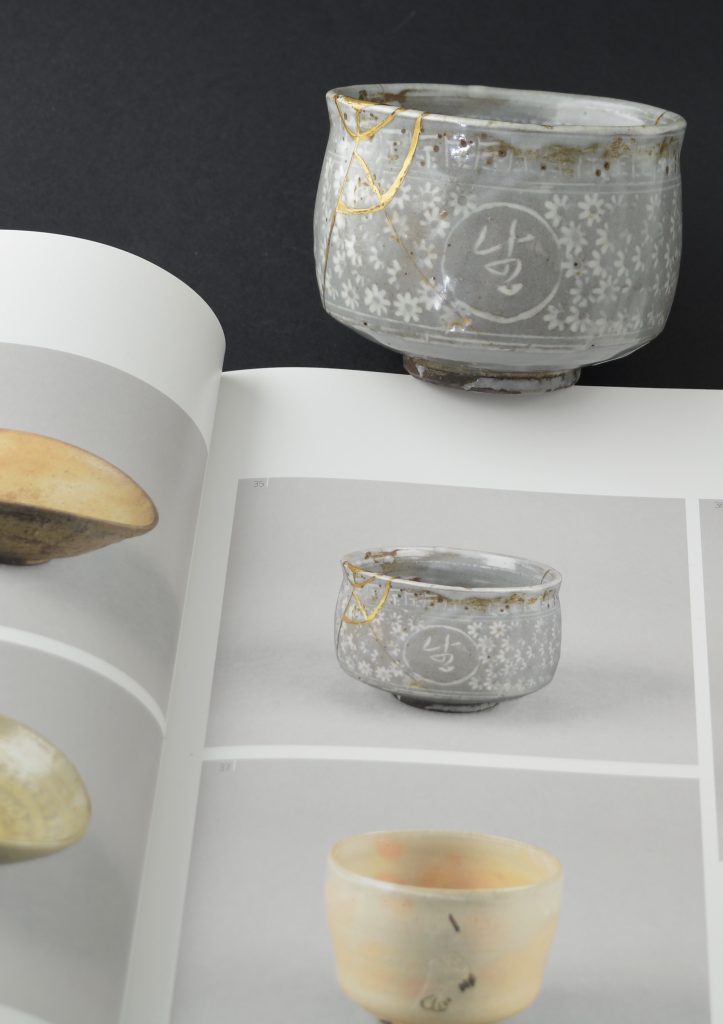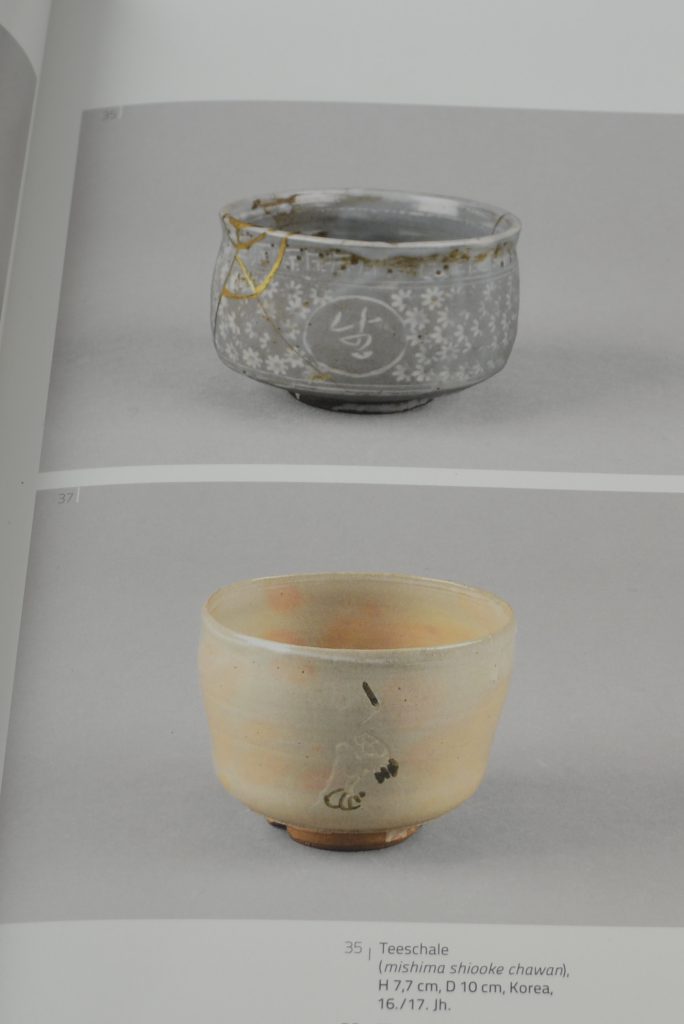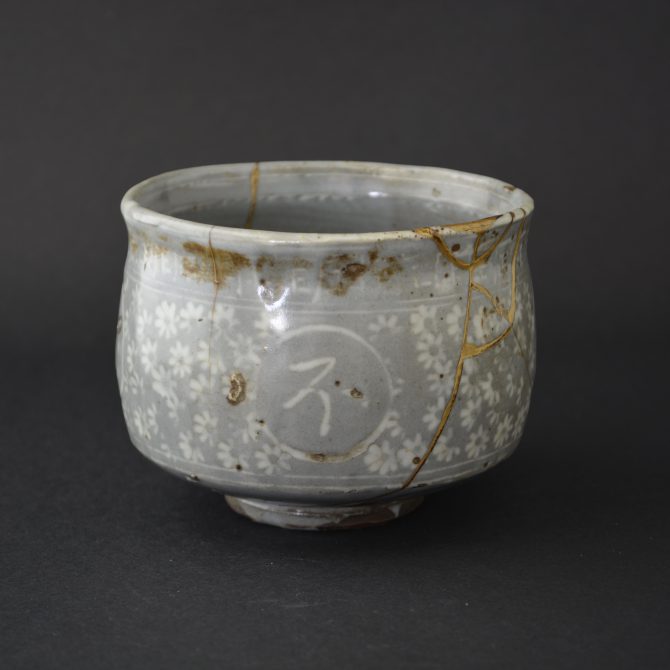
A Rare Korean Buncheong Stoneware Teabowl, 16th or 17th Century.
A Rare Korean Buncheong ware pottery Mishima shiooke chawan, 16th or 17th century, from the Ulrich Vollmer Collection. Perhaps made for the Japanese market. This Joseon dynasty (1392-1910) teabowl is wheel-thrown stoneware with stamped, incised and slip-filled decoration and has a pale green-grey glaze. It is extensively repaired using the Kintsugi technique and comes with a wooden box.
SOLD
- Condition
- It is extensively repaired using the Kintsugi technique.
- Size
- Diameter : 9.8cm (4 cm)
- Provenance
- The Ulrich Vollmer Collection of Japanese Pottery and related objects.
- Stock number
- 24486
- References
- Published and Exhibited : Momoyama-Keramik Und Ihr Einfluss Auf Die Gegenwart (Various authors, Gurdrun-Esters for the Keramion Foundation, Frechen, Germany, 2011. ISBN 978-3-94005-6-8.) page 33, plate 35.
Information
Kintsugi – ‘Golden Joinery’ :
Kintsugi, ‘golden joinery’, also known as Kintsukuroi ‘golden repair’ is the Japanese techique of repairing broken pottery with laquer dusted or mixed with powdered gold, silver or platnium. As a philosophy, it treats breakage and repair as part of the history of an object, rather than something to disguise. Laquerware is a longstanding tradition in Japan, and at some point kintsugi may have been combined with maki-e as a replacement for other ceramic repair techniques. One theory is that kintsugi may have originated when Japanese shogan Ashikaga sent a damaged Chinese teabowlback to China for repairs in the late 15th century. When it was returned, repaired with ugly metal staples, it may have prompted Japanese craftsmen to look for a more aesthetic means of repair. Collectors became so enamored with the new art that some were accused of deliberately smashing valuable pottery so it could be repaired with the gold seams of kintsugi. Kintsugi became closely associated with ceramic vessels used for chanoyu (Japanese tea ceremony). While the process is associated with Japanese craftsmen, the technique was also applied to ceramic pieces of other origins including China, Vietnam, and Korea.
